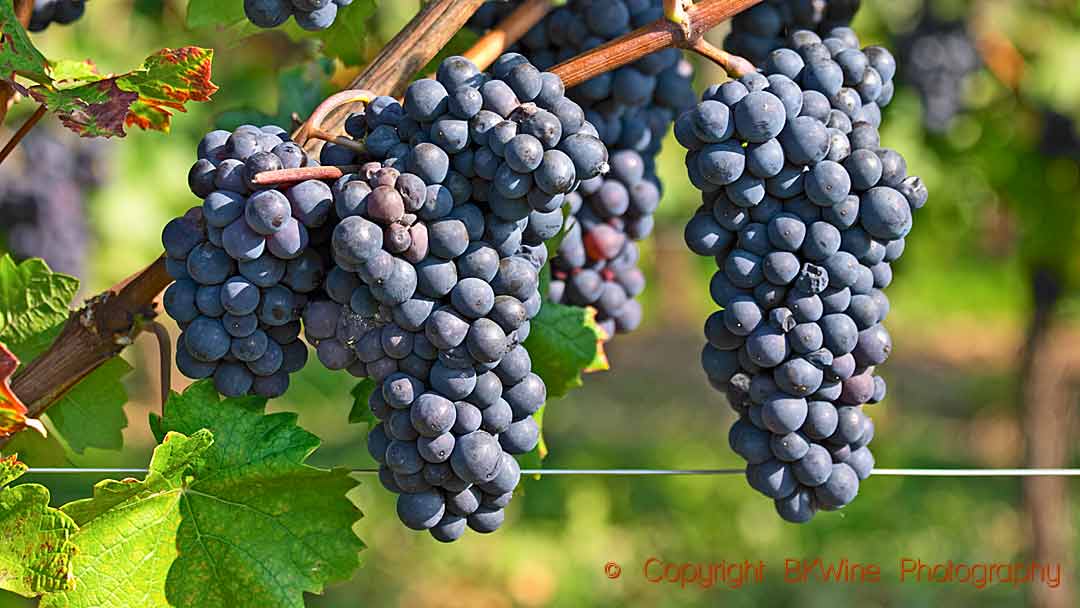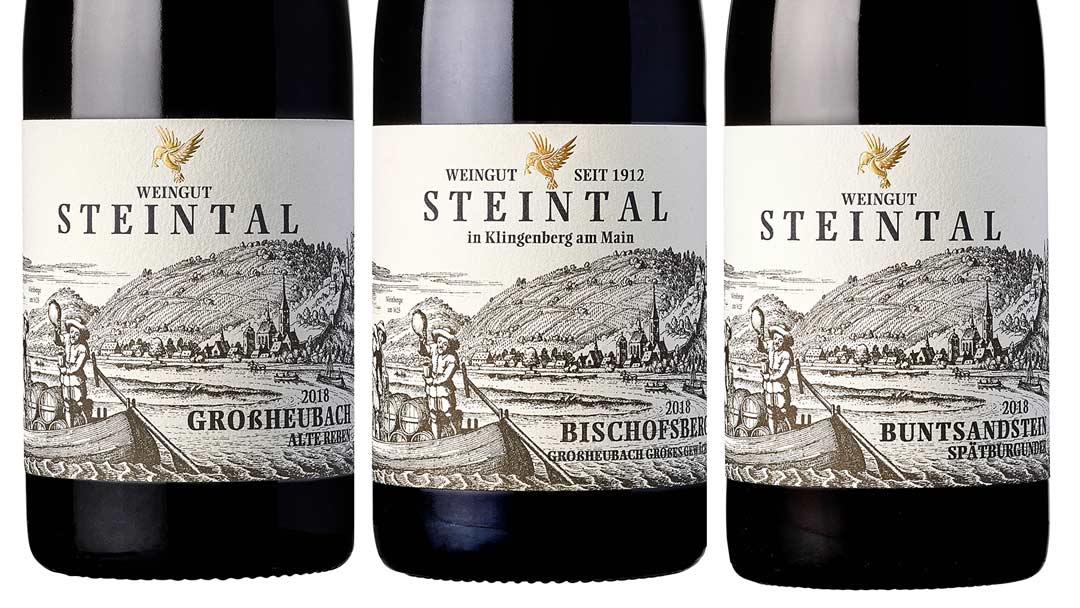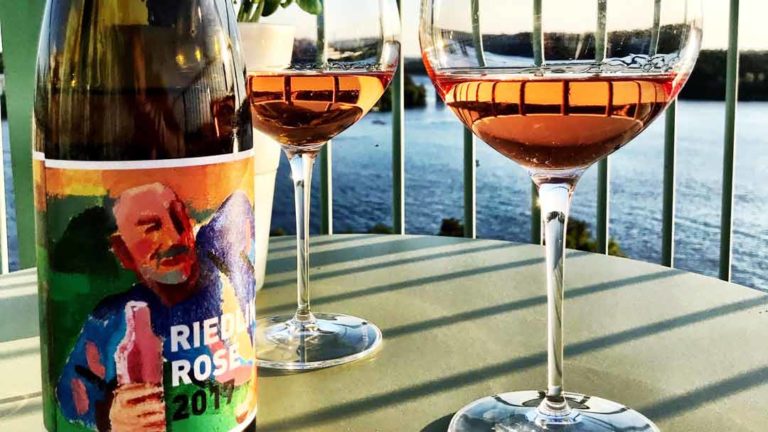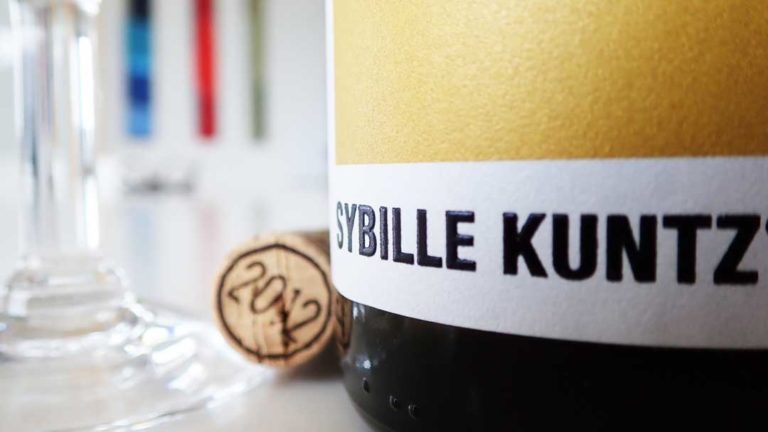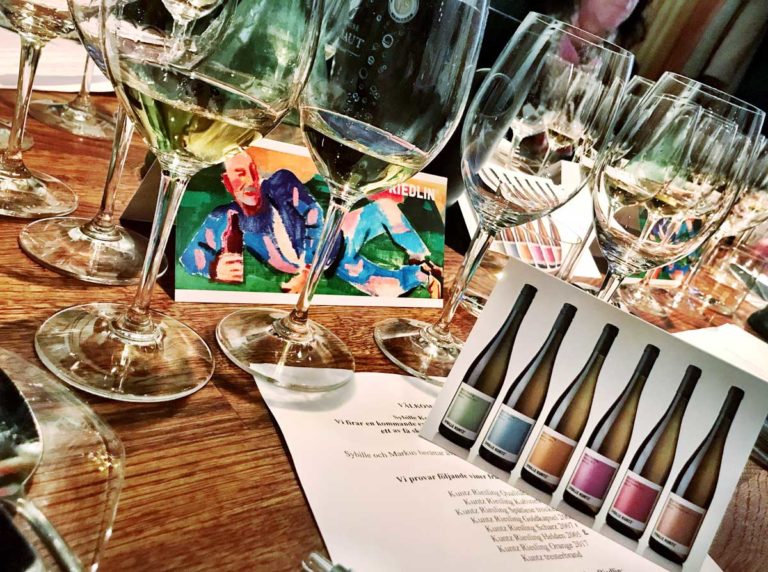If you say Franconia, I’ll say Pinot Noir at lightning speed
Germany is getting a reputation for the quality of its pinot noir, locally called spätburgunder. But how can that be? It is already a challenge to grow pinot in Burgundy. How will it survive even further north? BKWine Magazine’s reporter Sven-Olof Johansson went to explore the truth of the reputation when Jonas Hirn from Weingut Steintal came to town. What’s the verdict? German pinot noir can be excellent!
A twenty-five-year-old guy takes the stage and uses the hour to improve our knowledge considerably. Red wine from Franconia (also known as Franken) is a blank slate for the vast majority. Pinot noir, or spätburgunder as it is called locally, is gaining ground in Germany, but in Franconia, we can probably consider it a rarity. We welcome a new acquaintance in the form of wines from Weingut Steintal.
A couple of years ago, he, the guy, Jonas Hirn from Weingut Steintal, visited champagne producers in Bouzy to hone his knowledge of pinot noir. The primary purpose was replanting at home in Franconia and to benefit from growers who have worked with the grape for a long time and on a large scale.
But at the same time that the heart is in spätburgunder, Jonas has realized that a long-term view means scouting for alternative grapes. The climate changes are also felt in Franconia, and rising temperatures may very well mean switching to other grapes within a few decades. Around five per cent of Franken’s roughly 6,000 ha are planted with spätburgunder. A tiny percentage, but still a significant increase in just ten years.
“I hate French oak”, Jonas exclaims and jokingly winks at the audience. “You can joke about it, but the French barrels we have are definitely our worst purchases ever. We pick by hand, we ferment spontaneously, and we let the wine rest in local oak barrels,” he adds. “We appreciate the effect of oak but like to avoid tones of vanilla.”
Whether it is the effect of the local area’s oak, the soil or the vinification, we shall leave it unsaid. But Steintal makes pinot that differs from both Burgundy and Alsace. Or it may be the consistent method that makes all the wines have a family feel in a way that gives Steintal its own profile. In the aroma, they are pretty, clean, dense and very far from warm-climate jammy. Even my notes on the taste are connected with dense and fresh fruit, finely ground tannins and refreshing acidity.
Steintal’s three versions of GG (Grosses Gewächs, the top tier in the VDP’s – Verband Deutscher Prädikatsweingüter – classification) are undeniably good. However, the favourite Steintal Klingenberg Schlossberg GG 2020 still commands a price of 80 euro. It would have been interesting to tally it in a blind test against wines in the corresponding price range from other regions.
For the same penny, you get four bottles of the entry-level wine Steintal Buntsandstein Spätburgunder 2018 (20 euro retail in Sweden). Very, very lovely entry-level wine which, after a moment of aeration, released a slightly reductive puff that was present when the glass was initially poured, which can perhaps be derived from the screw cap closure.
The wine already ordered for our simple abode is Steintal Grossheubach Spätburgunder 2018, 27 euro. A nose with pretty expressions of cold-climate pinot. Dry, slender fruit and crisp, pleasant acidity. Refined tannins embellish the refreshing fruit. Part of the elegance may well be due to the moderate 12.5% alcohol. The wine is young and has lots of vitality; I guess it is right in the middle of the drinking window.
Weingut Steintal owns 12 ha and produces around 35,000 bottles per year. Imported to Sweden by Handpicked Wines. Weingut Steintal can be found here.
Franken – quick facts
Franconia (Franken) is located just east of Frankfurt, on the river Main. Würzburg is the largest city. They are known for their particular bottle shape, Bocksbeutel.
It has 6130 hectares of vineyards, mainly planted with white wine grapes, 82% of the total. The most cultivated grapes are silvaner (24.8%), muller thurgau (24.3%) and bacchus (12.3%). They have 270 hectares of pinot noir.
The Wonderful World of Wine
About Franken in the book The Wonderful World of Wine:
In Franconia, they specialize in dry white wines. Of the region’s just over 6,000 ha of vines, 82% are white. Silvaner is the big grape and produces dry, food-friendly and fairly full-bodied wines. In Franconia, with its clayey limestone soil, silvaner has found a place where it thrives. Müller-thurgau is still extensively planted. Some producers try to show a characterful side of this usually rather bland grape. Bacchus is the third most planted grape. The wines from Franconia are immediately recognizable because they are traditionally bottled in a unique bottle called Bocksbeutel.
The capital of Franconia is Würzburg, known for its three major producers with magnificent wine cellars, Juliusspital, Bürgerspital and Staatliche Hofkeller.
Read more about German wines in Sweden’s only modern wine course book The Wonderful World of Wine.



